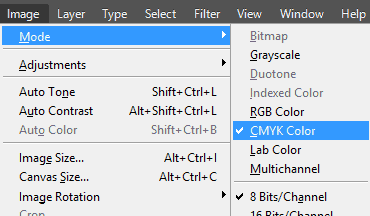Ron Suskind's
Confidence Men is not a calm first draft of
history. It is not an impartial or unbiased look at the Obama
administration's first two years. Rather, it is an investigation. The
crime is homicide, and the victim is the promise of Barack Obama's
presidency.
But this isn't a suspenseful whodunit. Suskind tips
his hand in the first pages. He's describing the press conference in
September 2010 where President Obama announced that Elizabeth Warren
would help set up the Consumer Financial Protection Bureau. The mystery
is why Obama seems to be holding her at arm's length.
It's
quickly solved. The villain of this vignette and one of the key
villains of the rest of the book is “the boyish man in the too-long
jacket at Obama's right hip, bunched cuffs around his shoes, looking
more than anything like a teenager who just grabbed a suit out of his
dad's closet.”
So who is this man-child who can't find a properly
sized suit to wear to the Rose Garden? “That's Treasury secretary Tim
Geithner,” Suskind says, “looking sheepish.”
Suskind's book
doesn't just have good guys and bad guys. It has good guys who look like
good guys, and bad guys who squirm beneath the weight of their badness.
Of Larry Summers, Obama's first director of the National
Economic Council, Suskind says that his personality “recalls that of
Nixon and Henry Kissinger, or, more recently, Dick Cheney.” As for Rahm
Emanuel, Obama's first chief of staff, he's “all impulse and action,
with very modest organizational skills.”
I mentioned this was a
murder mystery, so I won't leave you in suspense about the perpetrator:
Suskind's investigation leads him right to Obama's senior staff, who he
believes took advantage of the young president's inexperience and led a
refreshingly unconventional candidate into a depressingly conventional
presidency.
Suskind's story goes something like this: In 2008,
Obama was presented with an economic crisis of astonishing severity and
complexity. In the beginning, he showed himself to be unexpectedly
prepared to deal with it, both intellectually and temperamentally.
His
self-assurance and personal magnetism attracted a variety of impressive
and able advisers, including former Federal Reserve Chairman Paul
Volcker, billionaire investor Warren Buffett, UBS America chief Robert
Wolf, former Labor Secretary Robert Reich, and former SEC Chairman
William Donaldson.
But as “the severity of the crisis bore down
on him,” Obama found himself leaning toward a different sort of adviser
safer, more predictable. He wanted people who knew Washington, and knew
how to get things done.
The “bold visions of the campaign season
had meanwhile resolved into the serious, often risk-averse business of
actually governing,” writes Suskind. “In the midst of a battering
economic storm, it no longer seemed like the right time to be making
waves.”
If you want to know what killed Obamaism, the answer is
the stagnant economy. No president, no matter how politically graceful
or personally confident, looks good in the midst of an economic crisis.
Americans don't want leaders so much as they want jobs. And that's
Obama's problem now, too.
The great counterfactual of Suskind's
book is, “What if Obama had chosen a different team of advisers?” But by
the end of his book, the counterfactual was coming true. Emanuel was
out. Summers, too. Christina Romer, head of the Council of Economic
Advisers, had left, and so had Peter Orszag, the first budget director.
Even David Axelrod, Obama's longtime political adviser, was decamping
back to Chicago. Only Geithner remains.
In his conclusion,
Suskind seems appreciative of the replacements Obama chose. “Following
the midterms,” reports Suskind, “the president seemed to be assembling
the team he'd originally wanted.”
That was almost a year ago.
Today, Obama's poll numbers are weaker than ever. The political betting
markets give him a less than 50 percent chance of being reelected in
2012. Why? It's that unemployment is stuck above 9 percent. It's that a
double-dip recession is a real possibility.
Obama's fortunes
won't rebound until the economy rebounds. And so any account of what he
has done wrong, or what he could do right, needs to provide, first and
foremost, a persuasive case of how the White House could have done more
to promote an economic recovery over the last three years, or could do
more to accelerate one now.
Suskind's narrative takes place in
the White House. But the economic response really took place elsewhere.
Almost anything the White House wanted to do that would cost money had
to be authorized by Congress. Tax cuts? State and local aid?
Infrastructure spending? Nationalizing the banks? Congress. Giving
bankruptcy judges the power to write down mortgage principal?
Direct-employment programs? German-style work-sharing programs? In each
case, Congress.
It is easy to tell the story of what the White
House did wrong in its response to the financial crisis: It
underestimated it. It had good reason to underestimate it, of course.
Almost everyone was underestimating it. In the fourth quarter of 2008,
when Obama's economic team was meeting in Chicago to map out their
policies, the Bureau of Economic Accounts thought the economy was
contracting at a rate of 3.8 percent per year. It wouldn't be until this
year that we learned the economy was really contracting at a rate of 9
percent.
The observers who got it right were the ones who could
tell a story that didn't rely on the early data. Kenneth Rogoff and
Carmen Reinhart, who would publish “This Time Is Different: Eight
Centuries of Financial Folly,” their epic history of financial crises,
in late 2009, saw that the recovery would be slow and tough. Economists
like Paul Krugman and Joseph Stiglitz, who were more knowledgeable about
the struggles over recession in Japan and had their own Keynesian
understanding of financial panics, were also suitably pessimistic.
But
early mistakes can be corrected. If the initial stimulus is too small,
you make it bigger. If your housing policies are too modest, you toughen
them up. If the private sector sheds jobs and long-term unemployment
becomes a problem, you begin hiring workers directly.
Or so goes
the theory. The reality is more troubling. The initial stimulus was too
small, but there's no plausible case that Congress would have been
willing to make it much bigger just because the Obama administration had
a theory that the financial crisis would lead to a worse recession than
most forecasters expected. The trouble was that attacking a financial
crisis with a too-small stimulus was a bit like attacking pneumonia with
too-few antibiotics: You feel better for awhile, and then it comes
back. And this time, it's harder to kill.
The problem is
political. Having very publicly passed a very big policy that you
promised would revive the economy, the country blames you when the
economy does not, in fact, revive. Your policies are discredited and
your opponents are emboldened. You lose seats in the next election and
your leverage over lawmakers. So you can't, with any prospect of
success, go back to the well and ask for a bigger stimulus or more money
to buy up bad mortgages. And then, when the economy gets worse, you're
simultaneously in charge and out of options. You came to Washington
promising change and now you're begging for patience. It's a crummy
situation, and there's no combination of policy proposals or speeches
that can get you out of it. But this is the vise that has tightened
around Barack Obama's presidency.
The fundamental constraints on
the administration's leaders have not been economic or conceptual, but
political. They know they need to act. But they can't act, or at least
they can't act at the scale necessary to really change the economic
situation. Republicans won't let them. Between 2009 and 2011, Democrats
had 60 votes for a short period of time, but with Sens. Ben Nelson and
Joe Lieberman included in that total, they never had easy control of the
Senate, whose minority leader, Mitch McConnell, said in October 2010,
“The single most important thing we want to achieve is for President
Obama to be a one-term president.”
The question, then, is whether
the administration could have done more to plan for its inevitable
political weakness when it was at the height of its powers. One
oft-promoted possibility would have been to abandon health care reform
and focus solely on jobs. But it's not clear what, exactly, that would
have meant doing. Health care reform took up most of 2009. The stimulus
didn't really begin spending its money until 2010, and the recovery
didn't flag until later that year.
There is little reason to
believe that in 2009, before the stimulus had actually begun doing its
work, the Obama administration could have gone back to Congress asking
for more. And if the White House, which commanded the largest Democratic
majority since the 1970s, had spent the year sitting on its hands
waiting to see how the stimulus turned out rather than taking on health
care reform or energy or financial regulation, its base would never have
forgiven it.
If the White House couldn't go through Congress,
perhaps it could have done a better job going around it. A major
omission in Suskind's book is that it makes little mention of the
Federal Reserve. But the Fed is arguably more powerful than Congress
when it comes to setting economic policy, and it is certainly more
powerful than the president.
The White House made two major
mistakes here. One was leaving two seats on the Fed's Board of Governors
unfilled. Congress certainly deserves some of the blame for this
Senate Republicans filibustered Peter Diamond, a Nobel laureate
economist whom the Obama administration nominated to fill one of the
open slots but the truth is that the White House was slow to nominate
Diamond, passive once it did nominate him, and seemingly lost once his
nomination failed.
At the moment, the two seats on the Fed's
Board of Governors remain open, and the White House has not put forward
any new candidates. Those seats matter because the Federal Reserve is a
cautious institution that is more comfortable fighting inflation than
pursuing full employment, and if you want it to act with more vigor, you
need to bring that energy in from the outside.
Of course, the
most straightforward path to energizing the Fed isn't adding two new
members to its Board of Governors, but replacing its chairman. And the
White House had an opportunity to do so in 2010, when Ben Bernanke's
term expired. Instead, Obama chose to renominate Bernanke. The thinking
was that Bernanke had pursued an extraordinary set of activist policies
during the worst of the crisis he probably deserves more credit than
any single person for preventing a second Great Depression and he was
respected in the institution and by the markets.
But Bernanke has
been much more cautious in accelerating the recovery than he was in
combating the initial crisis. When the financial markets were
collapsing, he went far beyond the traditional limits of the Fed to
support the financial markets, purchase depressed assets, and inject
liquidity directly into the banking system. But he has not been nearly
as aggressive in his efforts to support the recovery.
The mass
media rarely mentions that, but nor do most presidents. Indeed, the
greatest confidence man of the last few years, at least going by
Suskind's definition, was not Larry Summers or Timothy Geithner, but
Barack Obama. Being a confidence man is almost in the job description of
the insurgent presidential candidate. Having not been president before,
you must, by definition, ask the American people for a trust you have
not earned.
And Obama was better at this than most. He gave
America hope. He made America believe he could deliver change. And, by
the standards of Washington, he has probably done more than anyone could
rightly have expected. Stimulus, health care reform, the end of “don't
ask, don't tell,” the creation of the Consumer Financial Protection
Bureau, the Lily Ledbetter Fair Pay Act, the payroll tax cut, new
tobacco regulation this is much more than your average first-term
president achieves. But by the standards of the speeches and spirit that
animated Obama's campaign, he has not done nearly enough.
At the
end of the book, Suskind is sitting in the White House with Obama.
“Leadership in this office is not a matter of you being confident,” the
president reflects. “Leadership in this office is a matter of helping
the American people feel confident.”
But the president needs to
do more than lead. He needs to govern. And when he has so convinced the
American people of his leadership that their expectations for his term
far exceed his or anyone's capacity to govern, disappointment results.
That's when they go looking for another confidence man one whose
promises aren't sullied by the compromises and concession made in the
effort to deliver results and the cycle begins anew. (Slightly
abridged).
Ezra Klein is a columnist and blogger
for The Washington Post and a contributor to MSNBC and Bloomberg View.
This article was written before Barack Obama was re-elected in November
last year.










